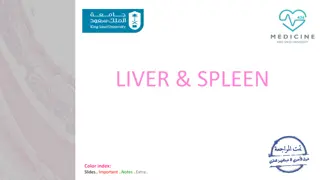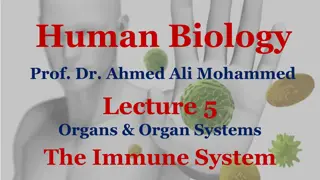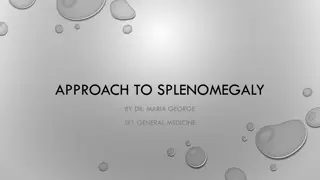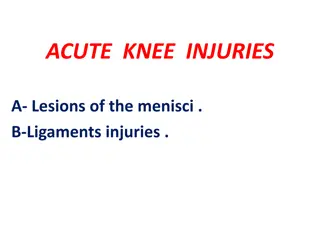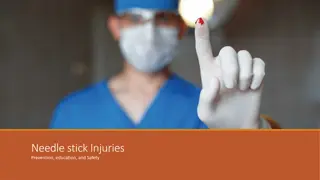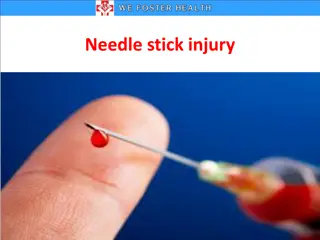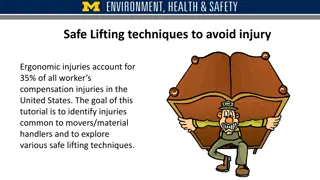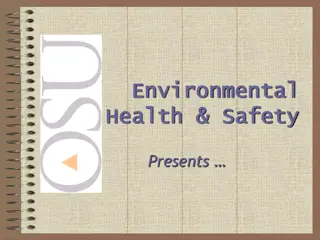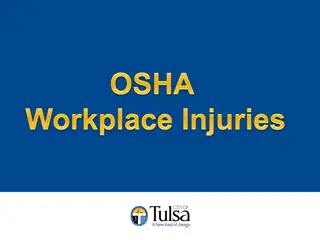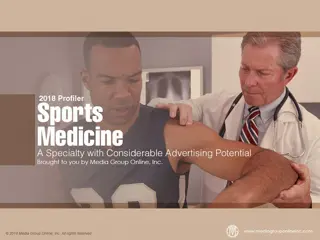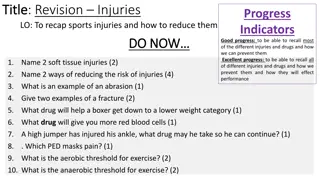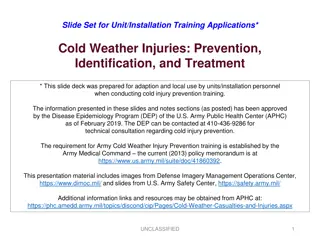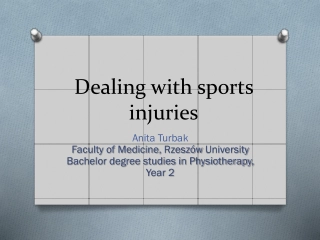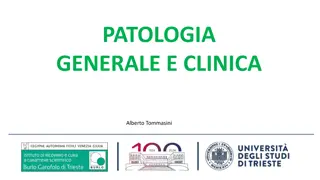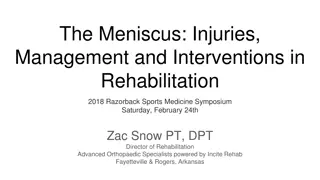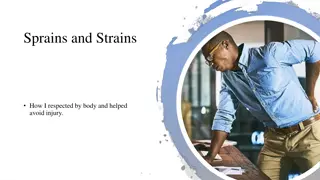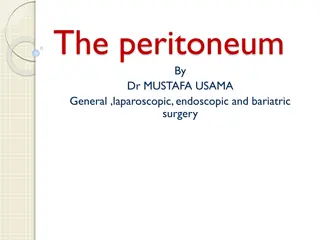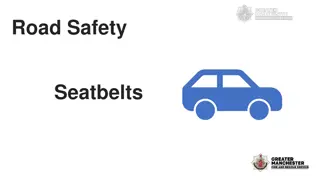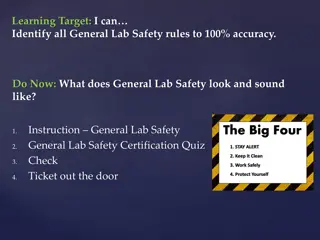Understanding the Functions and Injuries of the Spleen
The spleen, weighing around 75-250gm in adults, plays crucial roles in immune response, blood filtration, and cell repair. It acts as a reservoir for red blood cells and aids in cytopoiesis. Various investigations like radiology and ultrasound are used for diagnosing spleen injuries like rupture, with treatment options ranging from conservative surgery to splenectomy.
Download Presentation

Please find below an Image/Link to download the presentation.
The content on the website is provided AS IS for your information and personal use only. It may not be sold, licensed, or shared on other websites without obtaining consent from the author. Download presentation by click this link. If you encounter any issues during the download, it is possible that the publisher has removed the file from their server.
E N D
Presentation Transcript
Weight about 75 250 gm in adult. it lies along axis of 10thrib. it consist of white and red pulp 90% of blood passing through open circulation. 10% of blood passing through direct arterio venous circulation . The overfull flow rate is about 300 ml / min. Function of the spleen :- 1- immune function :- production of Igm , opsonins , tuftsin. 2- filter function :- remove effete plateleteand RBC , iron removed from damage Hb and return to circulation . 3- pitting :- remove inclusions bodies from cells and return the repaired cells to circulation. 4- reservoir function :- contain about 8% of red cell mass. 5- cytopoiesis :- in the 4thmonth of intrnuterine life.
* Investigation :- - Plain radiology :- eg calcification . - Ultrasound . - CT scan , MRI . - radio-isotopscanning :- Tc99 * Splenic rupture :- - either by direct or blunt trauma. - Trivial trauma can rupture diseased spleen like in IMN or malaria.
Cases can be divided into 3 groups Patient succumbs rapidly from massive bleeding. Initial shock , recovery and sign of bleeding : local sign - abdominal rigidity - local brusing and tenderness - abdominal distension - kehr s sign - shifting dullness in flanks ( balance sign) - rectal examination . Fullness Delayed case :- haematomaaround the spleen . Investigation - x- ray -u / s -CT scan
X-ray finding of rupturs spleen Obliteration of splenicoutline. 1. 2. Obliteration of psoas shadow . 3. Fracture of one or more lower ribs on left side. 4. Elevation of left hemidiaphragm 5. Free fluid in between gas-filled intestinal coils. 6. Indentation of left side gastric air bubble Grades of splenic injury :- grade 1 < = capsular injury or subcapsular haematoma grade 2 < = laceration not reaching the hilum. grade 3 < = laceration reaching to hilum. grade 4 < = avulsion of pedicle or shattered spleen
A / not associated with intra-abdominal injury B / associated with intra-abdominal injury E / associated with extra-abdominal injury Treatment - Conservative surgery : splenorhaply esp. in child - Splenectomy
* Indication of splenectomy 1. Trauma :- accident or operative . 2. Removal en bloc with stomach as radical surgery. 3. To reduce anaemia or thrombocytopenia eg: spherocytosis , ITP , hypersplenism. 4. In association with shunt or variceal surgery eg: in portal hypertension .
* Post operative complications :- 1. Haemorrhage. 2. Haematemesis. 3. Gastric dilatation. 4. Left basal atelectasis. 5. Pleural effusion . 6. Gastric fistula . 7. Damage to the tail of pancreas. 8. Thrombocytosis 9. Post splenectomy septicaemia .may result from s.pneumoniae , N.meningitides , H.influenzaeand E.coli. 10. Opportunist post splenectomy infection (( OPSI)) this can be treated by vaccination , antibiotic prophylaxis


